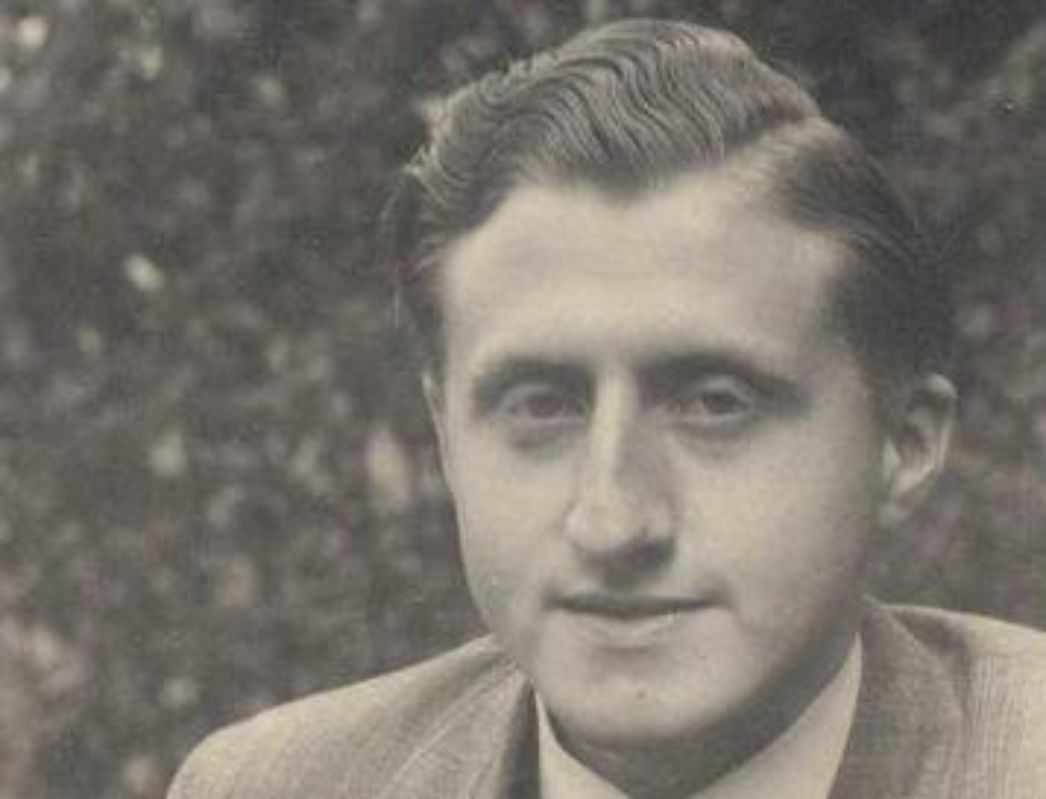Transcript
Narrator The moon shines brightly on the night of the 19th of April 1943. On a train platform between Mechelen and Leuven, the young medical student Robert Maistriau waits for a deportation train with his two schoolmates Georges Livchitz and Jean Franklemon. The train wagon carrying 1,600 Jews from a camp in Mechelen is headed for Auschwitz. The young men have decided to stop the train and free the inmates. For months, trains have regularly been running from Belgium to Auschwitz. The three men do not want to stand by any longer and watch this happen. They are doing this of their own initiative. The organized resistance groups in Belgium have said they will not help in this way. It seems too risky to them to ambush a train that is guarded by German police officers. Thus the three friends are on their own; they are armed with a revolver and some pliers with which they hope to pry open the wagon doors.
As the train approaches, they put a lantern wrapped in red paper on the tracks. From a distance it looks like an emergency signal.
And then the unexpected happens: The engineer stops the train. Right away, the three men run to the cattle wagons. Robert is the only one to manage to open a wagon door. Inside the wagons people push and shove; some inmates escape immediately while others yell that it’s too dangerous. In an attempt to open another door, Robert and his friends come under the fire of the German guards. The train heaves into motion again. Hardly 10 minutes have gone by.
17 people have managed to leave the wagon. They disappear into the night and go into hiding: They owe their lives to Robert. By the time the train reaches the German border, more than 200 further prisoners have managed to escape from the train.
The three friends succeed in escaping as well. They go their separate ways. But Georges and Jean fall prey to the Gestapo shortly thereafter. Georges is shot and Jean is deported to Germany.
Robert Maistriau, who until that point had only been loosely affiliated with the resistance movement, went on to join the “Groupe G”, a resistance group consisting of former students of the University of Brussels. The group specialized in acts of sabotage against Germans in greater Brussels.
For almost a year everything went smoothly. Robert participated in train derailments, attacks on industrial plants and other actions by the group. Further, he was responsible for recruiting new members.
But in March of 1944 he was arrested along with others. The Germans did not, however, connect him to the train ambush. This was likely what saved his life. After a few weeks in the Breendonk prison, the Germans transported him to the Buchenwald concentration camp in May of 1944. He was forced to work on construction sites in the Harzungen and Ellrich sub-camps. When he was freed from Bergen-Belsen he weighed only 39 kilograms.
He returned to his home country but then, beginning in 1949, he lived with his family for more than 40 years in the Congo, where he was in charge of various ecological and social development projects.
The daring ambush of Transport Train No. 20 carried out by the three young men is today considered a singular act of resistance. In all of Europe no comparable case is known.
Robert Maistriau would not encounter some of the people whom he freed from the train wagon until 50 years later. In 1994, Israel's Holocaust museum and memorial Yad Vashem included him in its list of “Righteous Among Nations”, which honours men and women who made an outstanding contribution to rescuing persecuted Jews.


